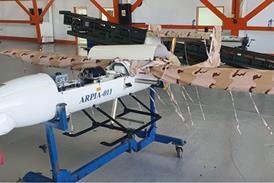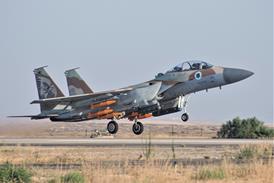Anyone anticipating a return to the halcyon days of the mid-2000s for business aviation may face a long wait. Analysis of annual jet deliveries shows the market may have hit a new normal, hovering around the 700 mark for the past six years and staying stuck at 720 or so in 2014 and 2015. In fact, 2016 could represent a turn for the worse, with figures for the first nine months indicating shipments down 9% on the same period last year.
In 2008, the year that the financial crisis took hold, shipments nudged 1,300. In 2007 they had been around 1,100. While the rise to the peak in the four or five years running up was sharper than the decline has been since, the business jet market has “been struggling to recover” to anywhere near the heights of the mid- to late-noughties, a “period that looks now to be seriously overheated”, comments Chris Seymour, head of market analysis at Flight Ascend Consultancy.
The week before NBAA, analysts at Flight Ascend Consultancy, which is part of FlightGlobal, held their regular pre-show webinar, using their extensive data and valuations expertise to assess the state of the business aviation market, both in terms of new deliveries and residuals. Seymour pointed out during that webinar that deliveries in recent years have represented only 3.5% of the total fleet; in 2008, it was more than twice that proportion.
The picture, however, is not uniform. Looking at the market in different size categories, smaller business jets – from very light to medium – saw a very slight increase in deliveries during the first three quarters of 2016. The 5% rise equates to nine aircraft. When it comes to large-cabin aircraft, however, the situation is worrying, with an 18% reduction in deliveries.
“The delivery trend has been down for the past two years, but 2016 looks to be worse than predicted,” says Seymour.
In terms of types delivered so far in 2016, the most popular have been the Bombardier Challenger 350 and Gulfstream G650, with 43 each, followed by 37 for Embraer’s Phenom 300, which had ended 2015 in top place.
The Brazilian manufacturer’s success with that type has been all the more remarkable because it is pitched against proven products from highly established brands, and Embraer only entered the corporate aviation market at the turn of the century.
Other emergent manufacturers and types have done well. While the leading Cessna product is the M2 with 28 deliveries so far this year, the new HondaJet has shipped 14, with Honda hoping to become a serious player in the superlight segment. The Japanese company’s performance was ahead of Dassault, whose best-selling product, the Falcon 2000, delivered 13. The new Cessna Latitude has made a strong start with 25 deliveries in its first full production year.
Where does this leave manufacturers’ market shares? Gulfstream and Bombardier still dominate with 40% and 31% of delivery value, respectively (calculated using Flight Ascend’s 2016 Base Full-Life Values). Embraer, Dassault and Cessna each have around 10% of remaining delivery value. However, as previously noted, deliveries overall are down 9% with only Cessna and Embraer increasing, by 4% and one aircraft, respectively. The three makers of large-cabin types are down 15-19%.
The regional split shows North America – still by far the biggest market – down 10%, with Europe seeing zero growth and Asia-Pacific falling 30%, although this represents just 10 aircraft. That said, it reflects the fragility of the large-jet segment as the new billionaires from this region had represented much of the demand for these types. There is better news from Latin America – where deliveries are stable – and the Middle East, which has seen six more aircraft delivered on this time last year.
As for the rest of 2016 and beyond, Seymour notes that if this quarter replicates 2015’s pace of deliveries, overall shipments may end the year at around 680 units, 5% down on 2015. Segments up to light-medium would grow most strongly – at around 9% – but medium- and large-cabin types will end another difficult year with, respectively, 14% and 15% fewer deliveries. The “most optimistic” outlook for 2017, says Seymour, is that it will “be a year of relative stability for new deliveries”.
Flight Ascend also took a detailed look at the super-midsize segment, which senior analyst Daniel Hall notes is “entering a new chapter – one of greater competition”. The super-midsize category – with a cabin seating up to 10 passengers and comfortably USA transcontinental – was effectively invented in the mid-90s by Dassault with the Falcon 2000. Prices in the segment today range from $18-25 million, and Gulfstream with its G280 and Bombardier with its Challenger 350 have provided the competition.
However, the dynamics have shifted with both Embraer’s Legacy 500 and Cessna’s Latitude entering the market in recent years and the Longitude on its way. According to Flight Fleets Analyzer, about 1,250 super-midsize jets are in service, with their share of the overall business jet fleet continuing to rise and now standing at approximately 6%. Although the segment is slightly behind forecast for the year so far, Hall expects it to have a strong four quarter for new deliveries.
RISING TO THE CHALLENGE
The Challenger 300 has traditionally led the segment, taking an average of two-thirds of total deliveries during its core delivery period. Hall notes that the Canadian type’s roomy and true flat-floor cabin, baggage access and layout made it “welcome in the market”.
It overtook the Falcon 2000 and its DX successor, and although all types suffered after 2008, the Challenger 300 – now the 350 – has continued to pick up sales with 68 deliveries last year.
Although Flight Ascend predicts a 5% delivery decline in the segment this year, partly due to a slight Challenger 350 production curb, it sees an increase from 2017 driven by the ramp up of the Legacy 500.
“Once the Longitude enters service in 2018 we feel that market share will be taken from the G280 and Challenger 350,” says Hall.
But he foresees the segment growing to about 150 annual deliveries by 2020, with the Challenger remaining the winner, with a smaller, but significant, 40% share.
For all the coverage from NBAA check out our dedicated landing page
Source: Flight Daily News























